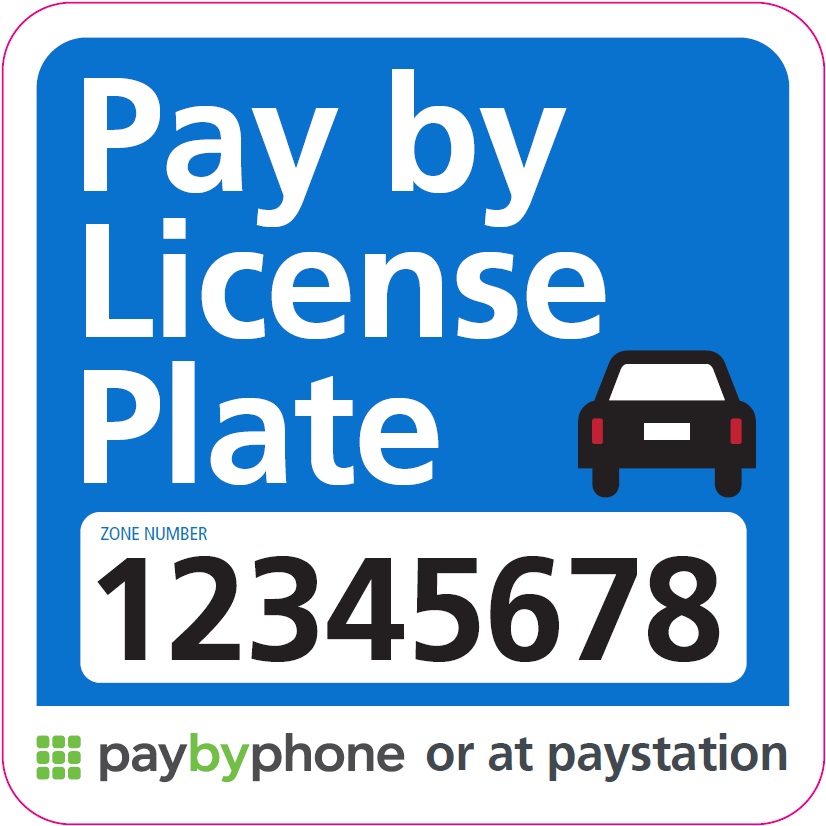By Pamela Johnson
A change from pay-by-space to pay-by-license plate is coming to half of all parking meters in San Francisco on the heels of a four-month pay-by-plate parking meter pilot focused on Indiana Street in the Dogpatch that ended in March 2021.
How it Works
Instead of entering your space number to pay for parking, you will enter your license plate number. When you pull into a parking space, head to the nearest paystation on the block, or reach for your smartphone, key in your license plate number and pay. Since the PayByPhone app stores your license plate number, you won’t have to remember or type it in every time when using the app. New overhead signage and decals on the paystations will let you know that the pay-by-plate system is in effect.

Look for signs that indicate Pay by License Plate is available
This new system comes with many benefits. Pay-by-plate gives you the option to pay at any pay station on your side of the block as you head to your destination. If you pay for parking but leave before your paid time expires, you may return to the same block and park without having to pay again, as long as you are within the original paid time. It also streamlines enforcement, giving parking control officers more time to focus on safety issues like double-parking and neighborhood concerns like residential permit parking enforcement.
The SFMTA is currently testing the pay-by-plate system to make it as effective as possible before rolling it out more widely. In early April, based on experience with the Dogpatch pilot, the SFMTA switched parking meters from pay-by-space to pay-by-plate on the 000 - 100 blocks of 10th Street, between Market and Howard Streets. By December of 2022, half of the 28,000 parking spaces in San Francisco are expected to be converted to pay-by-plate.
According to Ted Graff, Director of Parking for the SFMTA’s Streets Division, “The move to pay-by-plate makes on-street parking more efficient. It takes advantage of new technology to streamline enforcement and reduce costs. And we plan to reinvest the time and money we save to make the parking experience, and parking enforcement, better all around the city.”
To learn more about the Dogpatch Parking Meter Pilot, or how to pay for parking at a meter please visit the SFMTA parking website.
Published May 13, 2021 at 12:03AM
https://ift.tt/3tEjiNb

